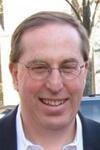A Douglas Stone
Responsibilities:
Deputy Director, Yale Quantum Institute
Carl A. Morse Professor of Applied Physics and Professor of Physics
Professor Stone’s current research is in optical physics and photonics, focusing on laser physics and microcavity optics, optical phenomena in complex and disordered systems, wave chaos and random matrix theory, non-hermitian effects and gain/loss engineering. He also has an active interest in quantum measurement and quantum computing. Trained as a condensed matter theorist, his earlier research was in the field of Anderson localization and quantum transport phenomena in disordered media, mesoscopic fluctuations of electronic conduction, non-linear dynamics, and quantum chaos.
His major contributions to optical physics include the introduction of ray and wave chaos concepts for the description of deformed microcavities and lasers, the development of Steady-state Ab initio Laser Theory (SALT) for describing novel microlasers, including random and chaotic cavity lasers, the discovery of Coherent Perfect Absorption or time-reversed lasing, the discovery of long-range correlations in the scattering properties of disordered systems (all topics in collaboration with various colleagues).
Professor Stone was one of the first condensed matter theorists to emphasize the novel properties of mesoscopic systems which are much larger than the atomic scale, but differ in their behavior from bulk solids. Prominent among these are phase coherence and related sample-specific fluctuations in all physical properties. Together with Patrick Lee he showed that the fluctuations of mesoscopic conductance are universal, with a variance depending only on the fundamental unit of conductance, e2/h, an effect which can be explained by the spectral rigidity of random matrices. Mesoscopic fluctuations have a direct connection to the field of quantum chaos which has applications in nuclear, atomic, condensed matter and optical physics, and Stone has applied concepts from quantum chaos theory to explain fluctuations in semiconductor quantum wires and quantum dots.
-
Willis Lamb Medal in Laser Science (2015)
-
Phi Beta Kappa Science Book Award (2014)
-
Fellow, Optical Society of America (2010)
-
Fellow, American Physical Society (1993)
-
Alfred P. Sloan Fellowship (1990)
-
IBM Outstanding Technical Achievement Award (1987)
-
Presidential Young Investigator Award (1987)
-
William L. McMillan Award (1987)
-
Rhodes Scholar (1976)
-
“Correlation effects in focused transmission through disordered media”, C. W. Hsu, S.-F. Liew, A. Goetschy, H. Cao and A. D. Stone, Nature Physics, NPhys4036 (2017).
-
“Remote Entanglement by Coherent Multiplication of Concurrent Quantum Signals”, A. Roy, L. Jiang, A. D. Stone, and M. H. Devoret, Phys. Rev. Lett., 115, 150503 (2015).
-
“Ab initio multimode linewidth theory for arbitrary inhomogeneous laser cavities”, A. Pick, A. Cerjan, D. Liu, A. W. Rodriguez, A. D. Stone, Y. D. Chong and S. G. Johnson, Phys. Rev. A 91, 063806 (2015).
-
“Low-spatial coherence electrically-pumped semiconductor laser for speckle-free full-field imaging”, B. Redding, A. Cerjan, X. Huang, M. L. Lee, A. D. Stone, M. A. Choma, and H. Cao”, PNAS, 112, 1304 (2015).
-
“Topological Nature of Optical Bound States in the Continuum”, B. Zhen, C. W. Hsu, L. Lu, A. D. Stone, M. Soljacic, Phys. Rev. Letters, 113, 257401 (2014).
-
“Parity-Time symmetry breaking beyond one dimension: the role of degeneracy”, L. Ge and A. D. Stone, Phys. Rev. X, 4, 031011 (2014).
-
“Coherent control of transmission of light through disordered media”, S. M. Popoff, A. Goetschy, S. F. Liew, A. D. Stone, and H. Cao, Physical Review Letters, 112, 133903 (2014).
-
“Filtering random matrices: The effect of imperfect channel control in multiple-scattering”, A. Goetschy and A. D. Stone, Physical Review Letters, 111, 063901 (2013)
-
“PT-symmetry breaking and laser-absorber modes in optical scattering systems”, Y. D. Chong, L.Ge, and A. D. Stone, Physical Review Letters, 106, 093902 (2011).
-
“Time-reversed lasing and interferometric control of absorption”, W. Wan, Y. D. Chong, L. Ge, H. Noh, A. D. Stone and H. Cao, Science, 331, 889 (2011).
-
“Steady-state ab initio laser theory: Generalizations and analytic results”, L. Ge, Y. D. Chong, and A. D. Stone, Physical Review A, 82 063824 (2010).
-
“Coherent Perfect Absorbers: Time-reversed Lasers”, Y.D. Chong, L. Ge, H. Cao, and A. D. Stone, Physical Review Letters, 105, 053901 (2010).
Popular Science Publications:
Professor Stone’s Book, Einstein and the Quantum: The Quest of the Swabian (Princeton University Press, 2013) combines biography, history of science and pedagogical treatment of modern physics concepts at a level suitable for both lay readers and scientists. It was selected by NPR Science Friday as a top science book of 2013, and won the Phi Beta Kappa science book award in 2014. He also writes occasional short popular science articles for Physics Today, Nature News and Views, and the Huffington Post.
